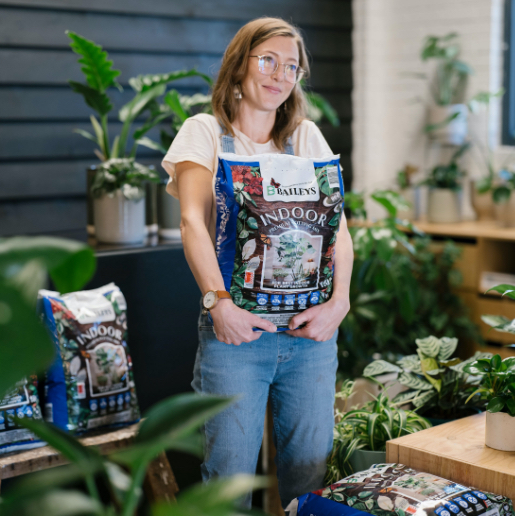
Join our Great Gardens Club!
Sign up to enjoy 15% off your first purchase from Baileys online. Plus, get our monthly WA gardening tips, latest news and promotions straight to your inbox.

Sign up to enjoy 15% off your first purchase from Baileys online. Plus, get our monthly WA gardening tips, latest news and promotions straight to your inbox.
You don't have to spend big to start your indoor jungle or expand your collection. With some basic materials and know-how, you can grow plants for free! There are many ways to grow new houseplants from a "mother" plant: stem cuttings, division of bulbs and side shoots, leaf cuttings, and layering. The process for each is a little different, so here's your complete guide to plant propagation.
What you'll need:
Side Shoots
Side shoots or "pups" are baby plants that grow from the side of the "mother plant". This is common in succulents, bromeliads, and the Chinese money plant (Pilea peperomioides).
Leaf Blade Cuttings
Works well with Mother-In-Laws Tongue (Snake plant or Sansevieria trifasciata cv.).
Leaf Vein Cuttings
This is a great method for plants with prominent leaf veins, such as Rex begonias, African violets, and peperomia species.
Plants with Runners or Plantlet
Plants that send out aerial runners like Spider Plants are easy to propagate.
When age takes its toll on spider plants, they often become straggly and their natural inclination is to produce new foliage and shed the old by forming aerial runners with plantlets. This is a sign to root the plantlets and start over.
Dividing Bulbs
Bulb plants can be divided in a couple of ways. When a parent bulb produces small bulbs off to its side, simply divide the new bulbs from the old. Plant the new bulbs as you did the parent bulb.
Caladium, cyclamen and tuberous begonia are among the houseplants that produce tubers. Cut the tubers into several pieces, making sure each division has an eye. Dust wounds with Sulphur or a fungicide to prevent rotting and plant out. Each section will produce a new plant.
Using Rooting Hormone
Many gardeners dip plant cuttings into a rooting hormone to increase the chances - and speed - of them growing new roots. The hormone comes in a number of forms - powder, liquid and a gel.
The liquid form is sold ready-to-use and as a concentrate that needs to be diluted first. The powder has a longer shelf life than liquid and is often cheaper. Gel is convenient but often more expensive; it also comes in different strengths, colour coded by the lid.
Whatever form you choose, always tip a small amount into a separate container and dip the plant stem or leaf into this, to avoid contaminating the whole mix.